Raw poultry (turkey, chicken, duck, goose, quail, etc.) may contain harmful bacteria such as Salmonella and Campylobacter that can cause foodborne illness.
Food handling errors and inproper cooking are the most common problems that lead to poultry-associated foodborne illnesses. Proper preparation, cooking, and storage procedures must be followed – or a foodborne illness can occur.
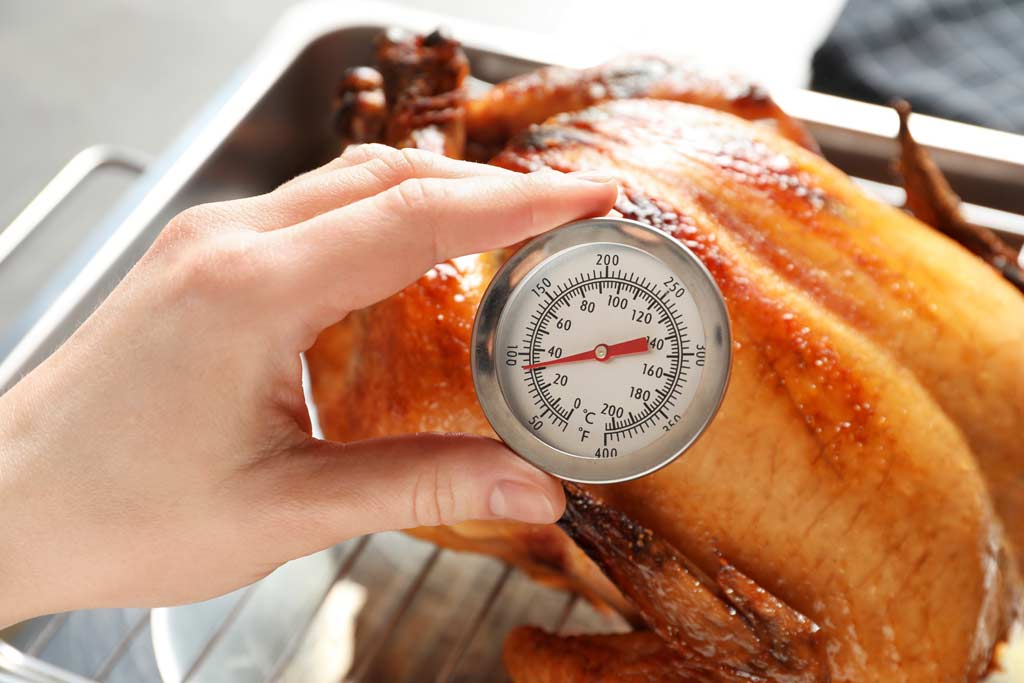
Turkey Consumption Statistics
Turkey consumption has nearly doubled over the past 25 years. According to the National Turkey Federation, 88% of Americans eat turkey on Thanksgiving. And the amount of turkey consumed is staggering: 46 million turkeys are eaten each Thanksgiving, 22 million on Christmas, and 19 million turkeys on Easter.
Food Safety Turkey Tips
Remember to follow these important turkey safety tips for safe preparation and cooking:
- Learn about foodborne hazards and pathogens, cross contamination, temperature controls, cleaning and sanitation methods, and the best practices to prevent foodborne illnesses.
- Food Manager (Level 2) Certification: SALE $99.00
- Person-in-Charge (Level 1) Certification $10.00
- Enter Promo "train10off" at Checkout
Don’t Wash the Raw Turkey
According to a food-safety survey conducted by the FDA, 68% of people wash a whole turkey before cooking it. However, the USDA does not recommend washing raw meat and poultry before cooking because it can spread bacteria up to 3 feet around the sink.
Cooking meat and poultry to the right temperature kills any bacteria present, so washing meat and poultry is not necessary.
If finding the right-sized bird is critical, buy a frozen one early & save yourself the trouble of running from store to store later during Thanksgiving week. Keep the turkey frozen until you’re ready to thaw & cook it!
Safely Thaw Your Turkey
A frozen turkey is safe indefinitely, but a thawing turkey must defrost at a safe temperature. When the turkey is left out at room temperature for more than two hours, its temperature becomes unsafe as it moves into the danger zone between 40°F and 140°F, where bacteria can grow rapidly.
Thaw turkeys in the refrigerator, in a sink of cold water that is changed every 30 minutes, or in the microwave. Never thaw your turkey by leaving it out on the counter. Bacteria can multiply rapidly at room temperature, so don’t thaw foods on the counter!
The easiest way to get that frozen bird thawed is in the refrigerator. It will defrost at a rate of about four pounds per day, so the average 16-pound turkey could take at least four days to completely thaw! If you fail to give your turkey enough time to thaw, it will cook on the outside, but the inside will be super raw.
Check out all the ways to thaw a turkey below in the infographic from the USDA:
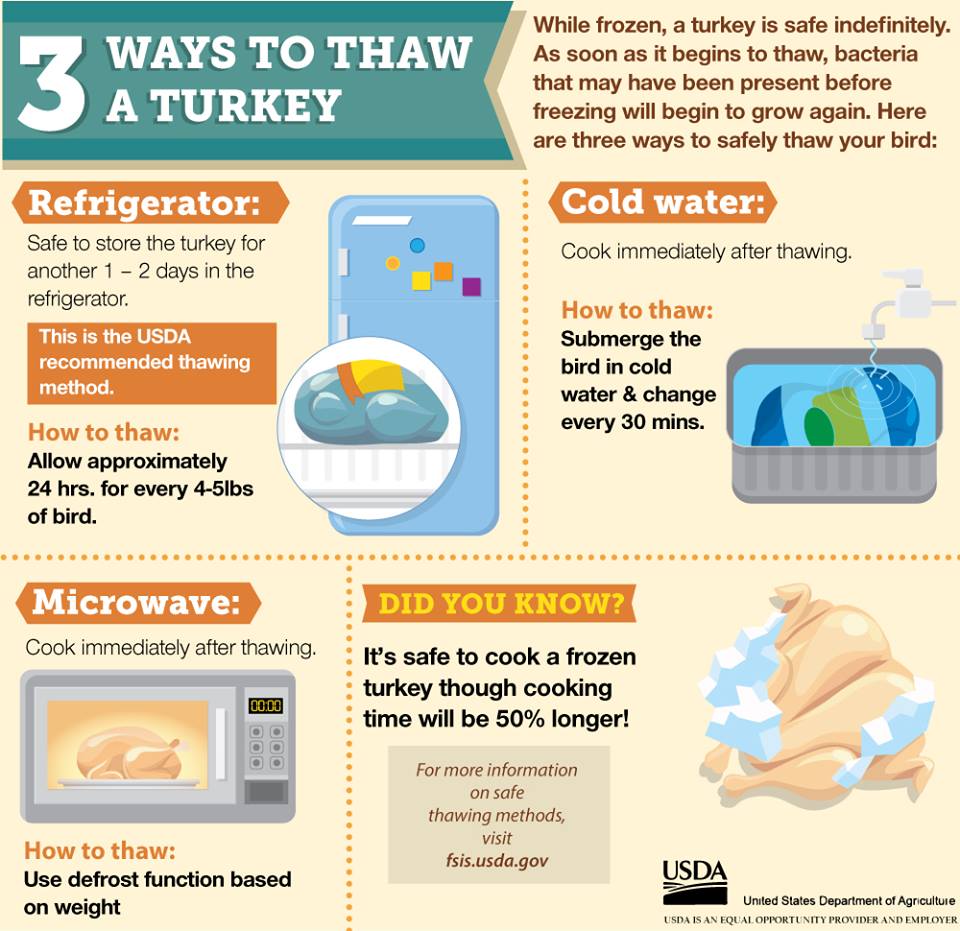
Turkey Stuffing – Cook Separate
Is it safe to cook the stuffing inside a turkey?
The USDA recommends that the entire turkey is cooked to 165 °F – including the stuffing! If the stuffing doesn’t reach 165 °F, the bacteria won’t be killed off and could cause foodborne illness. Cooking stuffing inside the turkey to 165 °F often means overcooking the bird – so it’s best to cook the stuffing separate.
Proper Cooking Temperature for Turkeys
To make sure the turkey has reached a safe internal temperature of 165°F, check by inserting a food thermometer into:
- the thickest part of the breast;
- the innermost part of the wing; and
- the innermost part of the thigh.
Turkey pop-up timers only check the internal temperature in one area and are not recommended.
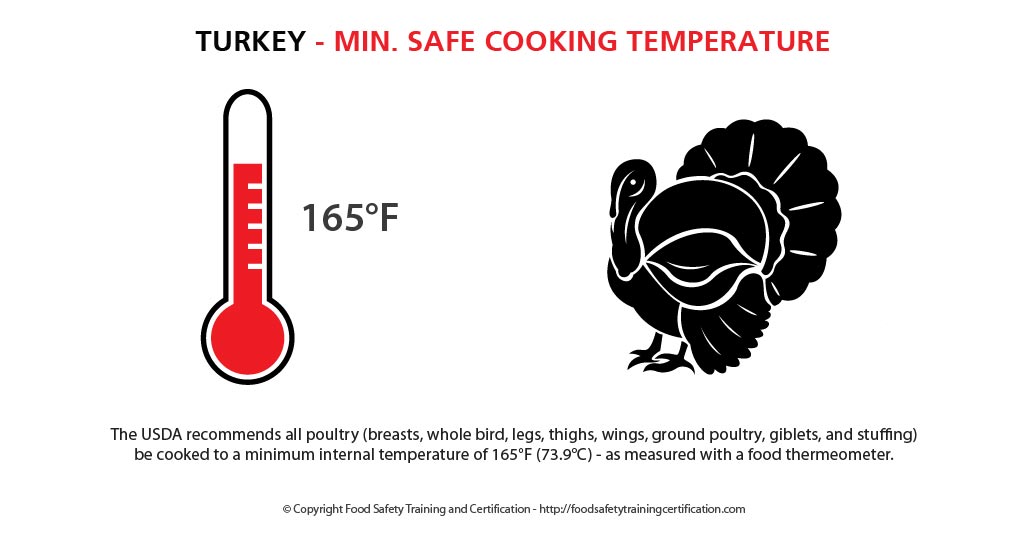
Store Leftovers Promptly
One of the critical factors in controlling bacteria in food is controlling temperature. Bacteria grows very slowly at temperatures below 40°F, multiply rapidly between 40°F and 140°F, and are destroyed at temperatures above 140°F.
Cut the turkey off the bone and refrigerate it within 2 hours of the turkey coming out of the oven.

Leftovers will last for four days in the refrigerator, so if you know you won’t use them right away, pack them into freezer bags or airtight containers and freeze. For best quality, use your leftover frozen turkey within four months.
Turkey Food Safety Infographics
Let’s Talk Turkey English infographic:
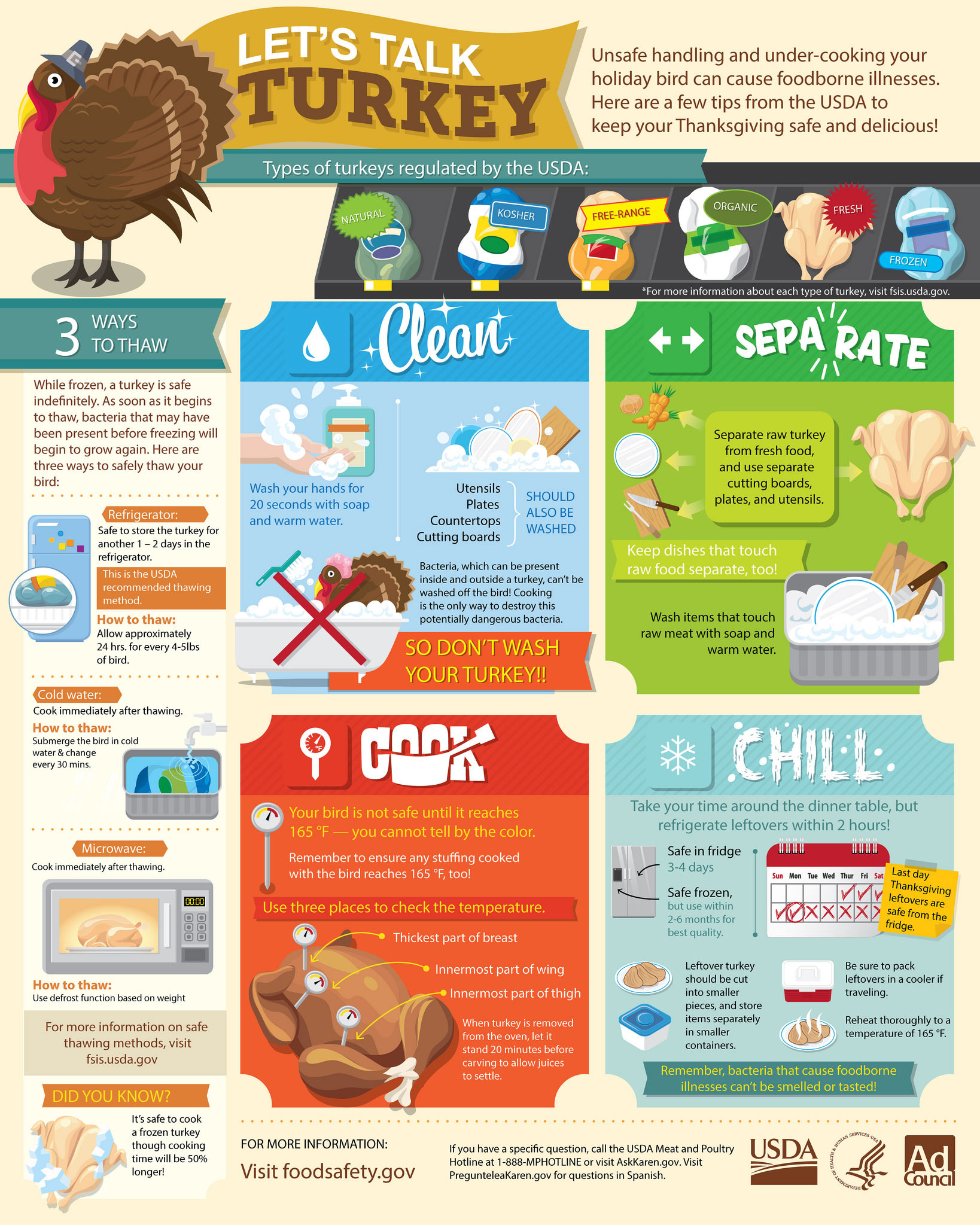
Let’s Talk Turkey Spanish infographic:
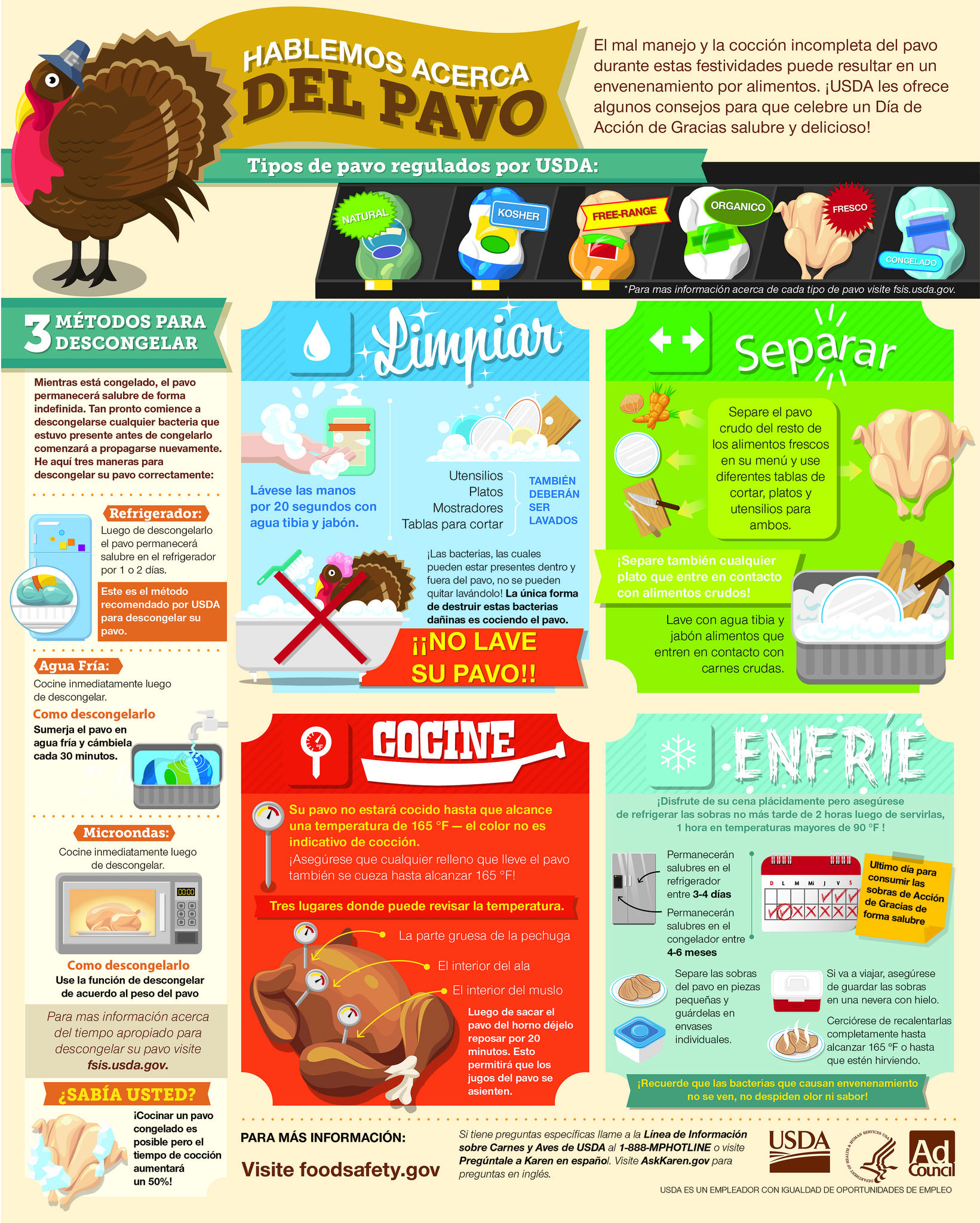
Additional Information
- CDC: Food Safety website
- FoodSafety.gov: Turkey Tipsexternal icon (En Españolexternal icon)
- FoodSafety.gov: Steps to Follow Before, During, and After Cooking Your Turkeyexternal icon | En Españolexternal icon
- USDA Food Safety and Inspection Service: Let’s Talk Turkey—A Consumer Guide to Safely Roasting a Turkeyexternal icon | En Españolexternal icon
- USDA Meat & Poultry Hotline: 1-888-MPHotline (1-888-674-6854)
